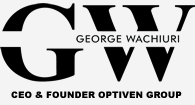Kindly Share>>
The Optiven Group is one of the few companies associated with the real estate sector that has thrived for over 20 years in Kenya. It’s logo is familiar with a cross section of stakeholders and is a well known even among school going children. Why, you may ask? Because in that time Optiven Group has made huge steps in impacting the society.
Through it’s corporate strategy, it has managed to expand it’s operations and maintained it’s position as the leading real estate company – a trend easily traceable in the award collection between 2018 and 2020. Wilson Mwangi, the Chief Executive at Digital Events says, “Optiven has been a long time winner in the Real Estate Excellence Awards. Since we launched in 2014, we have seen an increased interest in the Optiven portfolio in the last three years and are taking it as a learning model too”.
His sentiments are echoed by other stakeholders including it’s partner Fusion Capital, Daystar University which partners to send students to the Optiven Graduate Mentorship Program and sponsors such as Astral Aviation and Agriskul eLearning who joined the Optiven Foundation in empowerment and environment sustainability respectively.
It is these and much more that makes Optiven brand standout and it’s logo easily identified. So, what makes great logos for brands? Why are logos important? Great logos help sell products, but what kind of logo is right for your brand? This is often based on what customers prefer which maybe a simpler design.
Logos also provide valuable information about a product or service. In all cases, the objective is to assist companies choose what logo gives their best identity. For those seeking to change their logos as is the case with conglomerates, it is then time to explore whether or not it serves their expectations as brands.
At a time when brands decide to change the logo, it is to analyze the effect of the logo design on brand equity and it’s growth strategy for a specified period of time. So do logos really matter? Logo design choices might seem inconsequential to some.
But getting the design right is important for a number of reasons. A well-designed logo can offer substantial benefits to brands. It can help pique the interest of customers, differentiate brands from competitors, facilitate brand recognition, influence investor decisions, and convey what a brand is all about.
A logo is also a ubiquitous communication tool that might appear on your company’s products, website, annual report, entryway, and even on your business cards. It is thus a brand element that is frequently seen by stakeholders, particularly customers and the public.
Furthermore, the design characteristics of logos can considerably impact consumer behavior and brand performance. The latter becomes critical especially when a company is considering trading stocks, engaging in Public Private Partnership, expanding business to new markets or seeking strategic investors for the future.
Prior studies on logos have shown that their simplicity or complexity can influence the funding decisions investors make, and that their symmetry or asymmetry can boost brand equity. A descriptive logo includes textual or visual design elements (or a combination of the two) that clearly communicate the type of product or service a brand is marketing. They contain design elements that are not indicative of the type of product or service these brands are selling.
The question of whether to use a descriptive logo or a nondescriptive logo often arises during design meetings. In recent years several brands have modified their logos. About 60% of companies used a nondescriptive logo, while 40% used a descriptive logo. However, descriptive logos more favorably impact consumers’ brand perceptions than nondescriptive ones, and are more likely to improve brand performance.
What Power Does a Descriptive Logo Have?
The logo makes it easier for consumers to visually process descriptive logos and understand what a brand markets as a result. Similarly compared with nondescriptive logos, descriptive logos:
-
- make brands appear more authentic in consumers’ eyes,
- more favorably impact consumers’ evaluations of brands, and
- more strongly increase consumers’ willingness to buy from brands
- boost brands’ net sales more. The descriptive logo has a greater positive effect on sales than a nondescriptive one.
What Can Companies Learn?
If you are considering creating or modifying a logo, include at least one textual and/or visual design element that is indicative of the type of product or service your company offers. Underestimating the importance of logo design and the power of descriptive design elements can, sometimes, be a costly mistake.
The author, is a leading Entrepreneur, a Published Author, Philanthropist, Youth Empowerment Enthusiast, a Family man and CEO of Optiven Group.
Contact Optiven Group
Tel: 0790 300 300
Email: admin@optiven.co.ke
Website: www.optiven.co.ke
YouTube: https://bit.ly/2VdSuFJ




